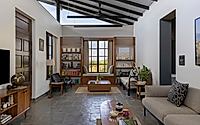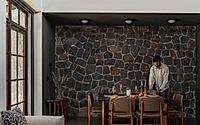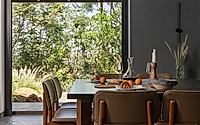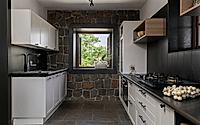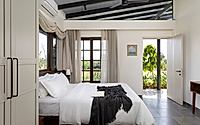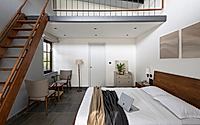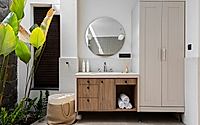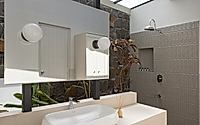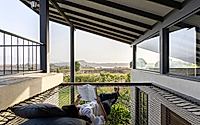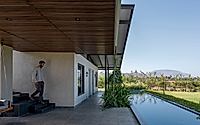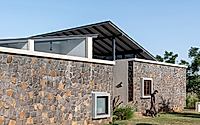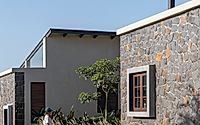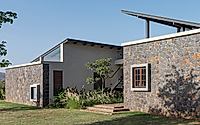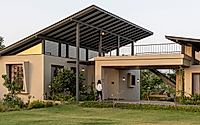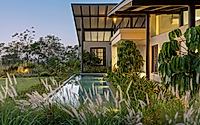The Open House Featuring Intentionally Multifaceted Design
The Open House, a farmhouse designed by Mantis, is located in Nashik, India. Completed in 2024, the design draws inspiration from the site’s dramatic seasonal changes. The house features a layout that seamlessly integrates with its surroundings, using ecologically sensitive practices like a living fence of native trees.

Lush Valley Setting
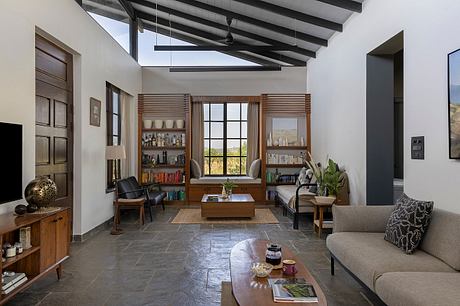
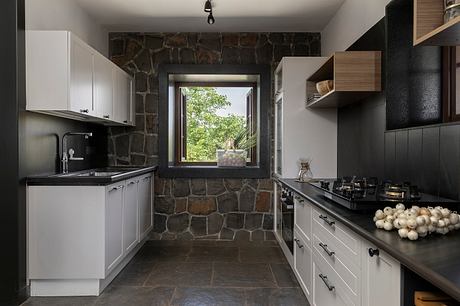
Balanced Nature-Based Design
Eventually, the design team fashioned a holistic site strategy, balancing the farmhouse, Tropical Food Forest, odico Dulce café, otens café, and nature-based land.
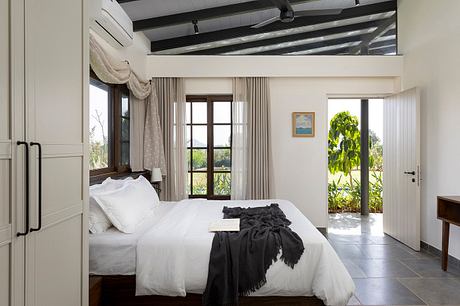
Initially appearing enclosed due to imposing walls and minimal openings, upon entering, the house connects various functions while seamlessly integrating nature.
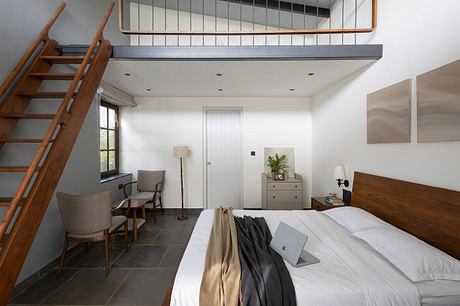
The walls effectively gate the “living block” and “bedrooms block, serving as versatile verandas.”
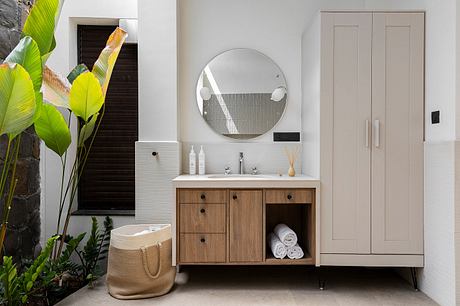
Living Block
While providing a comfortable living environment, it incorporated a practical window seat integrated into a bookshelf and a dining area recessed into a contrasting section with a large fenestration network.
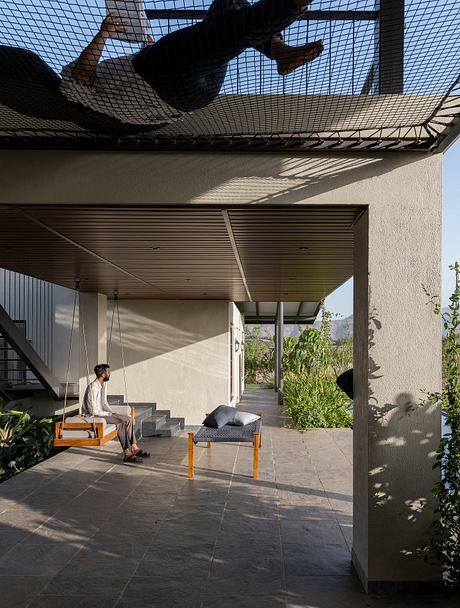
“The kitchen opens up to the dining area through a sliding door,” the team continued. “All focal points not only open out but also interact with one another.”
“The nook created between the window where the book shelves are placed becomes a comforting corner for reading, relaxing and an extension of the ‘jibad’ (langar) or the main window seat,” they continued. “Further it opens up through the sliding door to the dining area through the ‘zeninthe of food’ or the ‘jamah’.
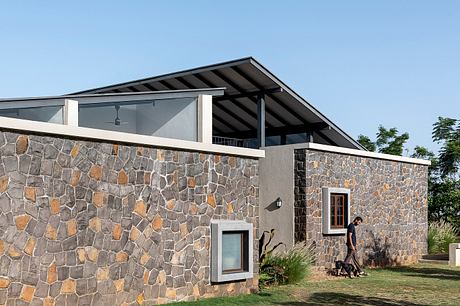
The architectural design of the living block incorporated a slightly floating or levitating roof, mantises noted—integrating exterior spaces with light and shadow nuances.
Structurally, it provides flexible programmatic opportunities while framing the dynamic surroundings.

Bedrooms Block
Both bedrooms possess attached retreat-like bathrooms, incorporating green pockets and skylights.
Mantis described cylindrical projections, such as stone walls, serving as captivating backdrops and reflections of the roof’s design.

Sustainable Ethos
Natural light and ventilation were achieved through courtyards while being consistent throughout the site.
Static local stone cut locally by unskilled workers and employees from indigenous communities harvesting materials sources with sustainable ceramics, tiles, pigment sacks and cement.

Nestled in dense greenery of their tropical food forest or farm, the architects aimed to transform parts of the site into a food forest by implementing permaculture principles, encompassing various layers.
Photography by Yash Katariya
Visit Mantis

